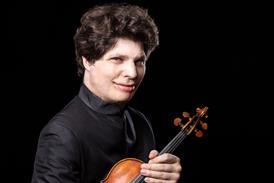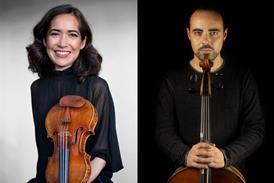- News
- For Subscribers
- Student Hub
- Playing Hub
- Podcast
- Lutherie
- Magazine
- Magazine archive
- Whether you're a player, maker, teacher or enthusiast, you'll find ideas and inspiration from leading artists, teachers and luthiers in our archive which features every issue published since January 2010 - available exclusively to subscribers. View the archive.
- Jobs
- Shop
- Directory
- Contact us
- Subscribe
- Competitions
- Reviews
- Debate
- Artists
- Accessories
Masterclass: Tai Murray on Beethoven’s ‘Triple’ Concerto Part 1

In the first of two articles, violinist Tai Murray discusses individuality, balance and tempo in the lengthy first movement of the op.56 concerto for piano, cello and violin
Explore more Masterclasses like this in The Strad Playing Hub
Read more premium content for subscribers here
Whenever Beethoven’s ‘Triple’ Concerto starts, I feel a great sense of anticipation. The way the tutti builds is so exciting! In bar 33 I’ve written the orchestral arpeggio into my part in a little pyramid, because I just love it. Sometimes in long tuttis my hands get cold, but that never happens in this piece. There’s something about the music: it never really stops, despite the massive rests. Beethoven winds the individual voices of the three soloists into music that is always flowing onwards: in bar 77 the orchestra makes way for the sudden, strange transition to the cello solo; then, after a few bars, it is as though the pianist says, ‘I think I’ll play’, and in bar 85 the violinist decides to follow. They are constantly diving in and out of one long slipstream, each in their own way, and that is part of what makes this piece so special.
Already subscribed? Please sign in
Subscribe to continue reading…
We’re delighted that you are enjoying our website. For a limited period, you can try an online subscription to The Strad completely free of charge.
* Issues and supplements are available as both print and digital editions. Online subscribers will only receive access to the digital versions.




























